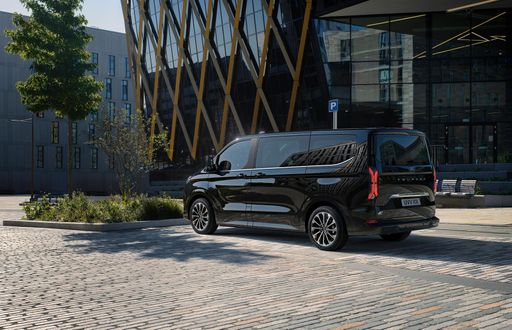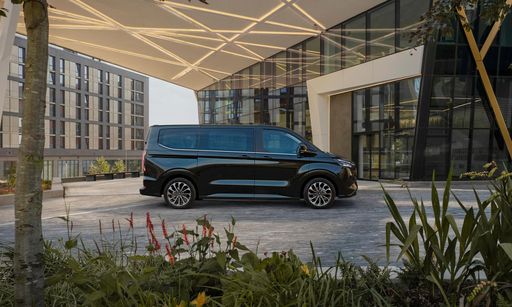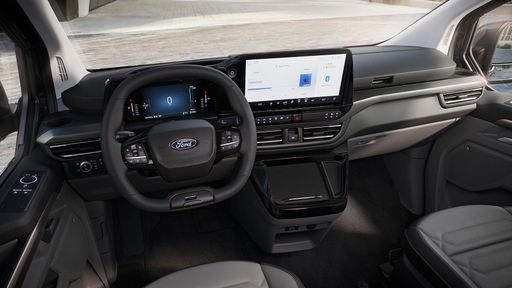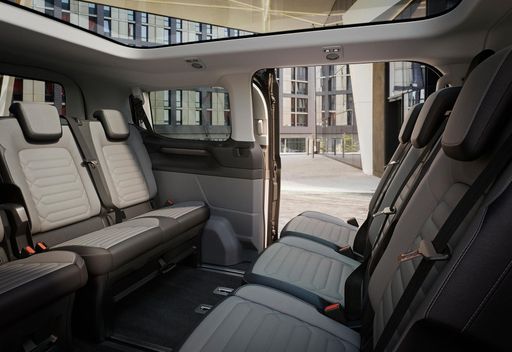Alfa Romeo Junior vs Ford Tourneo Custom – Which one offers the better deal?
Both models have their strengths – but which one suits you more?
Compare performance, efficiency, price and space directly: Alfa Romeo Junior or Ford Tourneo Custom?
Costs and Efficiency:
Looking at overall running costs, both models reveal some interesting differences in everyday economy.
Alfa Romeo Junior has a decisively advantage in terms of price – it starts at 25700 £, while the Ford Tourneo Custom costs 45700 £. That’s a price difference of around 20076 £.
Fuel consumption also shows a difference: Ford Tourneo Custom manages with 4.10 L and is therefore to a small extent more efficient than the Alfa Romeo Junior with 4.80 L. The difference is about 0.70 L per 100 km.
In terms of energy consumption, the advantage goes to the Alfa Romeo Junior: with 15.10 kWh per 100 km, it’s convincingly more efficient than the Ford Tourneo Custom with 24.20 kWh. That’s a difference of about 9.10 kWh.
As for range, the Alfa Romeo Junior performs evident better – achieving up to 410 km, about 103 km more than the Ford Tourneo Custom.
Engine and Performance:
Power, torque and acceleration say a lot about how a car feels on the road. This is where you see which model delivers more driving dynamics.
When it comes to engine power, the Ford Tourneo Custom has a minimal edge – offering 286 HP compared to 280 HP. That’s roughly 6 HP more horsepower.
In terms of top speed, the Alfa Romeo Junior performs evident better – reaching 206 km/h, while the Ford Tourneo Custom tops out at 150 km/h. The difference is around 56 km/h.
There’s also a difference in torque: Ford Tourneo Custom pulls somewhat stronger with 415 Nm compared to 345 Nm. That’s about 70 Nm difference.
Space and Everyday Use:
Whether family car or daily driver – which one offers more room, flexibility and comfort?
Seats: Ford Tourneo Custom offers noticeable more seating capacity – 8 vs 5.
In curb weight, Alfa Romeo Junior is significantly lighter – 1380 kg compared to 2453 kg. The difference is around 1073 kg.
In terms of boot space, the Ford Tourneo Custom offers significantly more room – 819 L compared to 415 L. That’s a difference of about 404 L.
In maximum load capacity, the Ford Tourneo Custom performs hardly perceptible better – up to 1354 L, which is about 74 L more than the Alfa Romeo Junior.
When it comes to payload, Ford Tourneo Custom decisively takes the win – 847 kg compared to 420 kg. That’s a difference of about 427 kg.
Who wins the race?
The Ford Tourneo Custom proves to be edges ahead and therefore becomes our DriveDuel Champion!
Ford Tourneo Custom is the better all-rounder in this comparison.
 @ Ford Motor Company / Ford Media Center
@ Ford Motor Company / Ford Media Center
Ford Tourneo Custom
Alfa Romeo Junior
The Alfa Romeo Junior captures the essence of Italian design with its sleek lines and compact dimensions, making it an icon of elegance and performance. With a spirited driving experience and a charming retro aesthetic, it appeals to enthusiasts and casual drivers alike. This delightful car embodies the brand's rich heritage while remaining a fun and engaging option for those seeking a unique automotive experience.
details @ Alfa Romeo / Stellantis Media
@ Alfa Romeo / Stellantis Media
 @ Alfa Romeo / Stellantis Media
@ Alfa Romeo / Stellantis Media
 @ Alfa Romeo / Stellantis Media
@ Alfa Romeo / Stellantis Media
Ford Tourneo Custom
The Tourneo Custom stands out as an ideal choice for families and businesses alike, combining style and practicality in a spacious package. Its flexible seating configuration makes it perfect for both transporting passengers and cargo with ease. With a focus on comfort and connectivity, the Tourneo Custom creates a welcoming environment for all journeys, whether short trips around town or longer adventures on the road.
details @ Ford Motor Company / Ford Media Center
@ Ford Motor Company / Ford Media Center
 @ Ford Motor Company / Ford Media Center
@ Ford Motor Company / Ford Media Center
 @ Ford Motor Company / Ford Media Center
@ Ford Motor Company / Ford Media Center
 @ Ford Motor Company / Ford Media Center
@ Ford Motor Company / Ford Media Center
 @ Ford Motor Company / Ford Media Center
@ Ford Motor Company / Ford Media Center
 @ Ford Motor Company / Ford Media Center
@ Ford Motor Company / Ford Media Center
 @ Alfa Romeo / Stellantis Media
@ Alfa Romeo / Stellantis Media
|
 @ Ford Motor Company / Ford Media Center
@ Ford Motor Company / Ford Media Center
|
|
|
|
Costs and Consumption |
|
|---|---|
|
Price
25700 - 41600 £
|
Price
45700 - 67800 £
|
|
Consumption L/100km
4.8 - 5.4 L
|
Consumption L/100km
4.1 - 8.6 L
|
|
Consumption kWh/100km
15.1 - 17.5 kWh
|
Consumption kWh/100km
24.2 - 25.2 kWh
|
|
Electric Range
344 - 410 km
|
Electric Range
49 - 307 km
|
|
Battery Capacity
0.4 - 51 kWh
|
Battery Capacity
11.8 - 64 kWh
|
|
co2
0 - 119 g/km
|
co2
0 - 226 g/km
|
|
Fuel tank capacity
44 - 45 L
|
Fuel tank capacity
55 - 63 L
|
Dimensions and Body |
|
|---|---|
|
Body Type
SUV
|
Body Type
Bus
|
|
Seats
5
|
Seats
8
|
|
Doors
5
|
Doors
4 - 5
|
|
Curb weight
1380 - 1689 kg
|
Curb weight
2453 - 2707 kg
|
|
Trunk capacity
340 - 415 L
|
Trunk capacity
672 - 819 L
|
|
Length
4173 mm
|
Length
5050 - 5450 mm
|
|
Width
1781 mm
|
Width
2032 mm
|
|
Height
1505 - 1538 mm
|
Height
1958 - 1959 mm
|
|
Max trunk capacity
1205 - 1280 L
|
Max trunk capacity
1045 - 1354 L
|
|
Payload
390 - 420 kg
|
Payload
620 - 847 kg
|
Engine and Performance |
|
|---|---|
|
Engine Type
Electric, Petrol MHEV
|
Engine Type
Diesel, Plugin Hybrid, Electric
|
|
Transmission
Automatic
|
Transmission
Manuel, Automatic
|
|
Transmission Detail
Dual-Clutch Automatic, Reduction Gearbox
|
Transmission Detail
Manual Gearbox, Automatic Gearbox, CVT, Reduction Gearbox
|
|
Drive Type
Front-Wheel Drive, All-Wheel Drive
|
Drive Type
Front-Wheel Drive, All-Wheel Drive, Rear-Wheel Drive
|
|
Power HP
136 - 280 HP
|
Power HP
136 - 286 HP
|
|
Acceleration 0-100km/h
5.9 - 9.1 s
|
Acceleration 0-100km/h
-
|
|
Max Speed
150 - 206 km/h
|
Max Speed
150 km/h
|
|
Torque
230 - 345 Nm
|
Torque
360 - 415 Nm
|
|
Number of Cylinders
3
|
Number of Cylinders
4
|
|
Power kW
100 - 207 kW
|
Power kW
100 - 210 kW
|
|
Engine capacity
1199 cm3
|
Engine capacity
1996 - 2488 cm3
|
General |
|
|---|---|
|
Model Year
2024 - 2025
|
Model Year
2023 - 2024
|
|
CO2 Efficiency Class
A, C, D
|
CO2 Efficiency Class
G, B, A, C
|
|
Brand
Alfa Romeo
|
Brand
Ford
|
What drive types are available for the Alfa Romeo Junior?
Available configurations include Front-Wheel Drive or All-Wheel Drive.
The prices and data displayed are estimates based on German list prices and may vary by country. This information is not legally binding.
